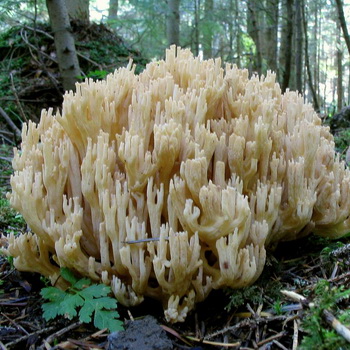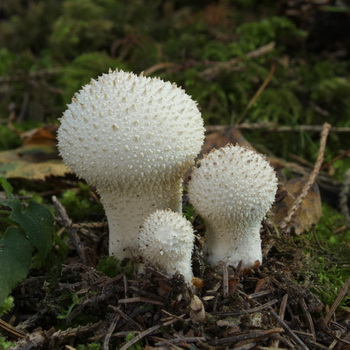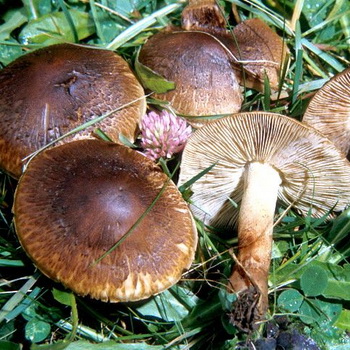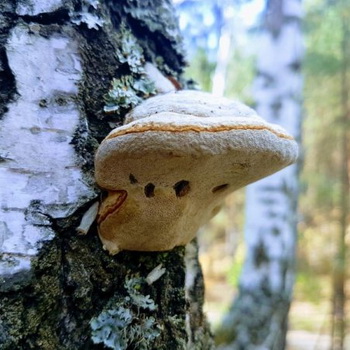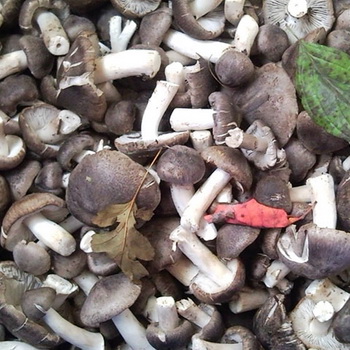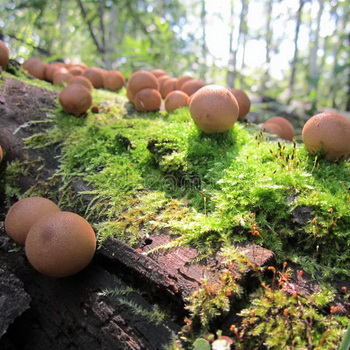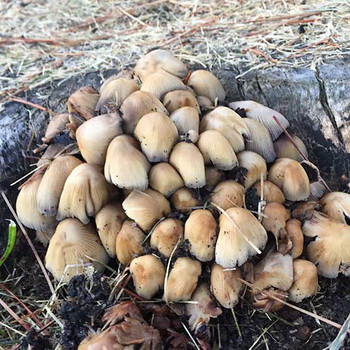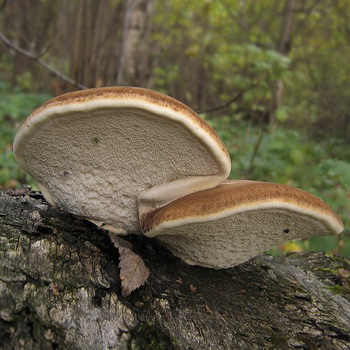Hat mushrooms with an offset or missing leg
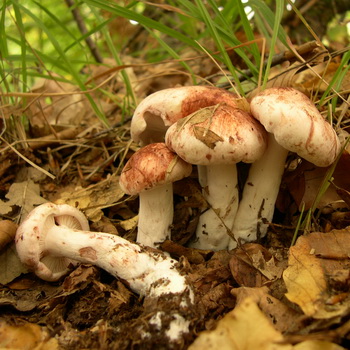
Content
Legless mushrooms with a round hat of white color
Variable crepidot (Crepidotus variabilis).
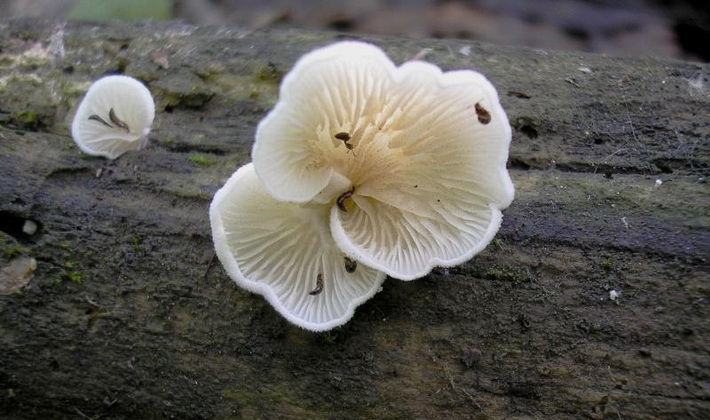
The family of fiberglass (Inocybaceae).
Season: summer autumn.
Growth: singly or in small groups in the form of skull-shaped fruit bodies.
Description:
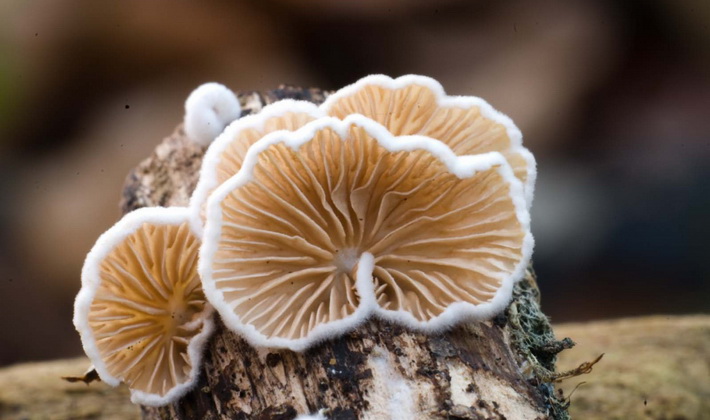
The surface of the hat is felt-pubescent, sometimes smooth, white or light yellow on the edge.
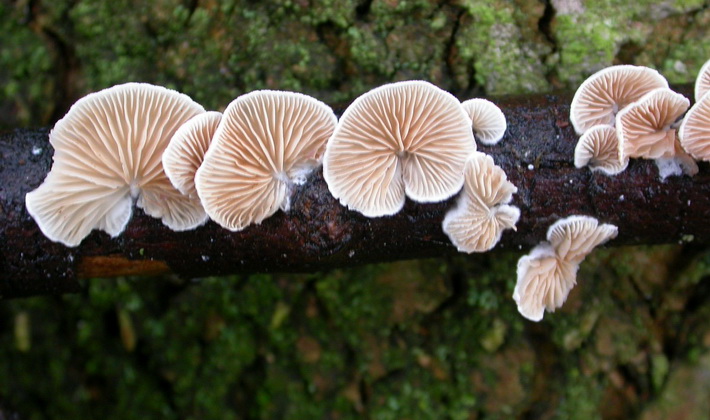
The plates are grown, relatively frequent, wide, bright.
The hat is convex, kidney-shaped, round, conch-shaped or lobed.
The edge of the cap is tucked, wavy or lobed, striped.
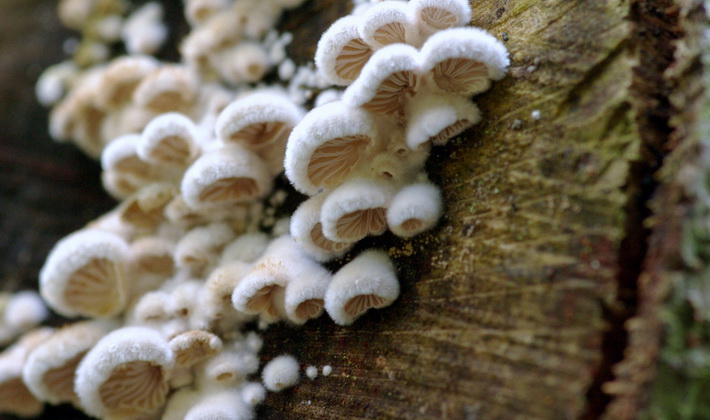
The pulp is white, with a sweet taste.
This round white mushroom without a leg does not represent nutritional value due to its small size.
Ecology and distribution:
It grows on dead branches and remains of deciduous wood, rarely conifers, on small plant debris.
Soft crepidot (Crepidotus mollis).
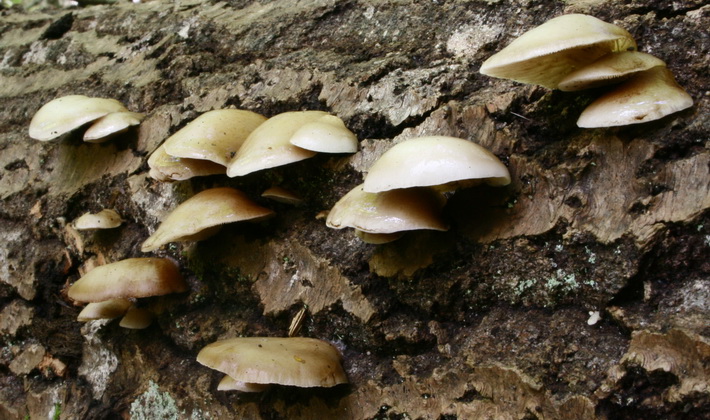
The family of fiberglass (Inocybaceae).
Season: mid-May - end of October.
Growth: in groups.
Description:

The hat is round, sessile, first kidney-shaped, later - conch-shaped, yellowish, smooth or small-haired.
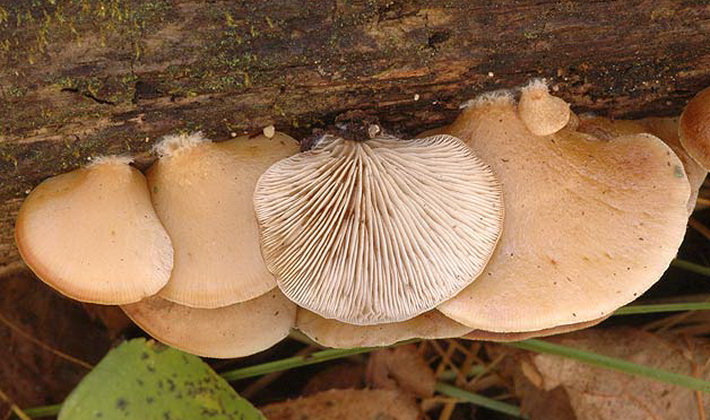
The pulp is soft, white or light, odorless.
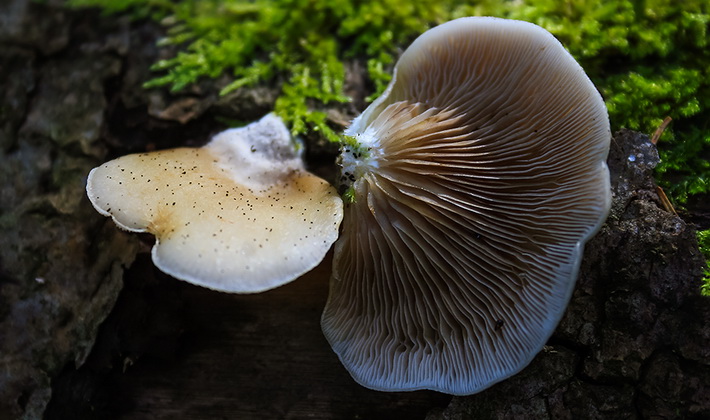
Leg lateral, rudimentary, more often absent.
The plates are frequent, forked, fan-shaped diverging from the place of attachment of the cap to the trunk, light.
This is an edible round mushroom without a leg or with a side leg of poor quality. It is used fresh (after boiling) or dried.
Ecology and distribution:
It grows on dead wood, deciduous branches, rarely on conifers. Sometimes this legless mushroom is found on treated wood and in hollows of living trees.
Oyster mushroom (Pleurotus ostreatus).
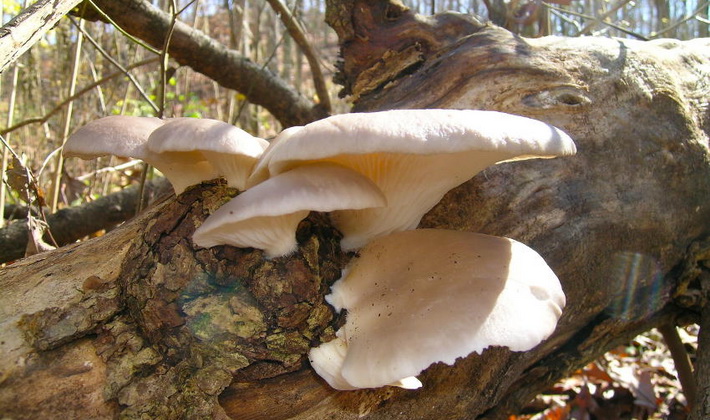
Family: Mycenae (Mycenaceae).
Season: September - December.
Growth: in groups, often in thick bundles of 30 or more fruiting bodies, fused at the base; less often - single
Description:
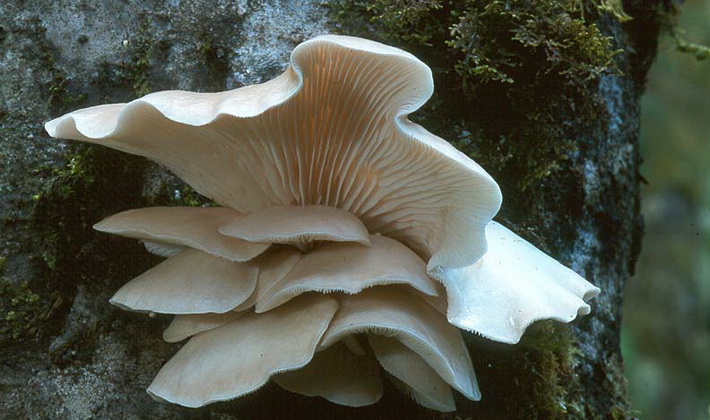
The plates are rare, thin, descending along the pedicle, with jumpers near the pedicle, whitish, yellowing with age.
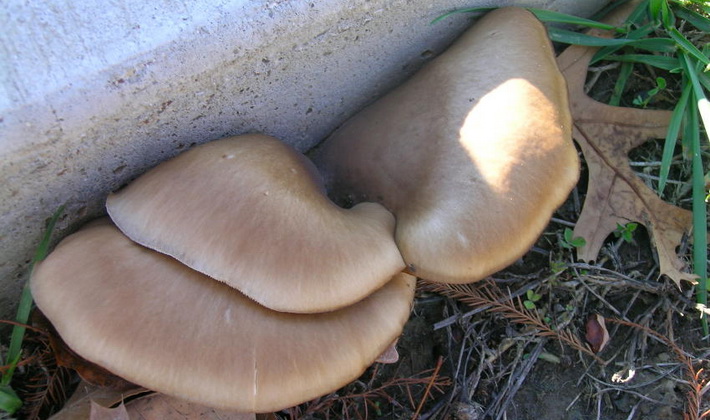
The hat is fleshy, solid, round, with a thin edge; ear-shaped or almost round (especially in the stalk).
The pulp is white, dense, in young mushrooms soft and juicy, later hard and fibrous.
The surface of the cap is smooth, glossy, often wavy.
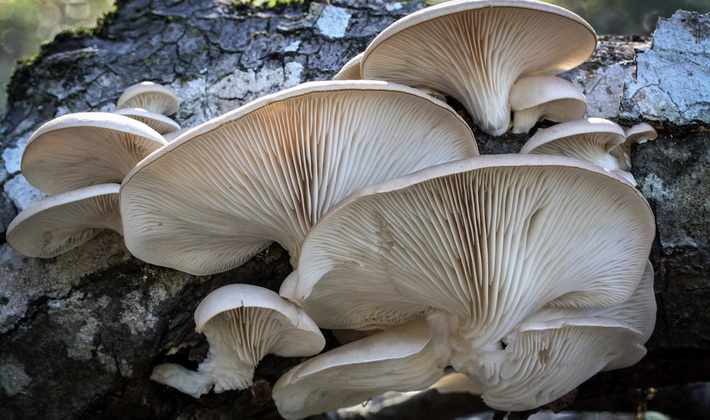
The leg is short, sometimes almost imperceptible, dense, solid, eccentric or lateral, narrowed to the base, often curved.
In young mushrooms, the hat is convex, and with a curled edge.
Tasty edible mushroom. It is better to collect young white round mushrooms without legs (cap diameter up to 10 cm); in old mushrooms, the leg is inedible. It is used universally - fresh in soups and main dishes, in pickles, etc.
Ecology and distribution:
It grows on stumps, deadwoods, dead trees or living, but weakened, trees of various deciduous (oak, birch, mountain ash, aspen, willow), very rarely - conifers in deciduous and mixed forests, parks and gardens. Cultivated on an industrial scale in many countries, including Russia. In artificial conditions, it grows on almost any substrate containing cellulose and lignin - sawdust, shavings, bark, paper, straw, bulrush, sunflower husk.
Other mushrooms with or without displaced legs
Lentinellus ovate (Lentinellus cochleatus).
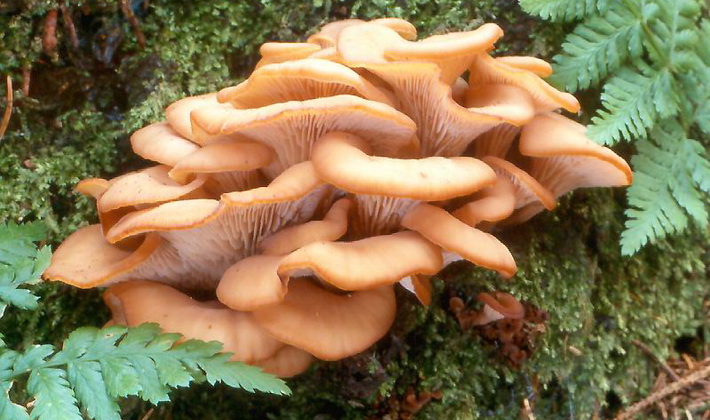
Auriscalpian family (Auriscalpiaceae).
Season: summer autumn.
Growth: in groups, often in bunches.
Description:

Legs of different shades of brown color, lateral, firm, but elastic, often grow together.
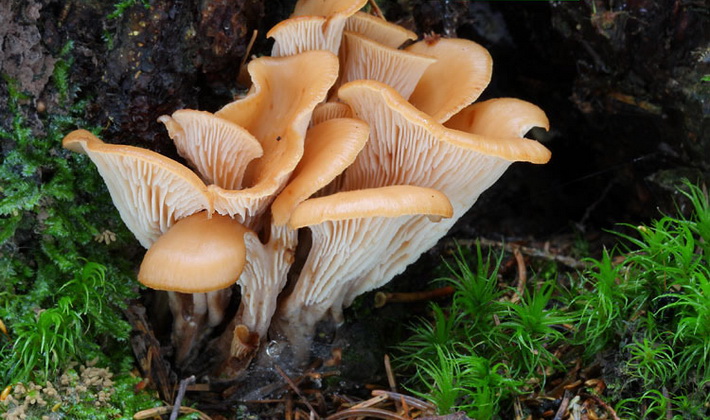
The plates are uneven, lighter than the caps, descending along the leg.
The pulp is hard, whitish, with a strong smell of anise.
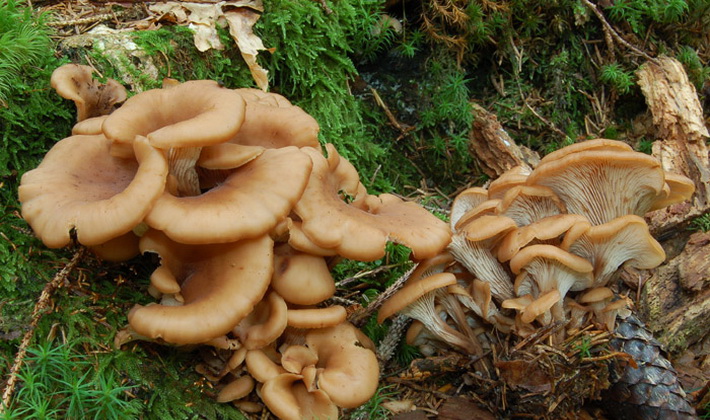
Hats are yellowish or reddish-brown, very different shapes, hard, thin.
The mushroom is inedible due to stiffness and strong odor.
Ecology and distribution:
Grows on rotten tree stumps.
Oyster mushroom autumn (Panellus serotinus).
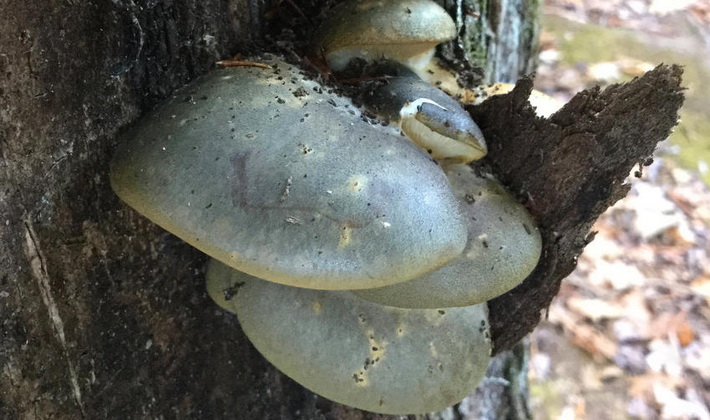
Family: Mycenae (Mycenaceae).
Season: end of September - December.
Growth: in groups.
Growth: in groups.
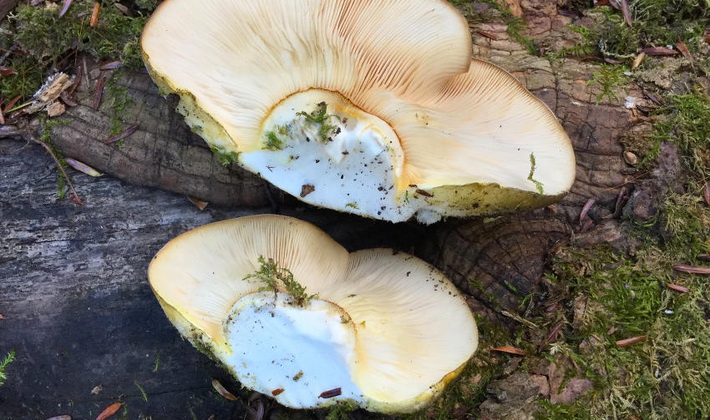
The pulp is dense, light, with age it becomes stiff and rubbery.
Plates are frequent, overgrown or slightly descending, yellowish, darken with age.
The color of the hat is a wide variety of dark shades.
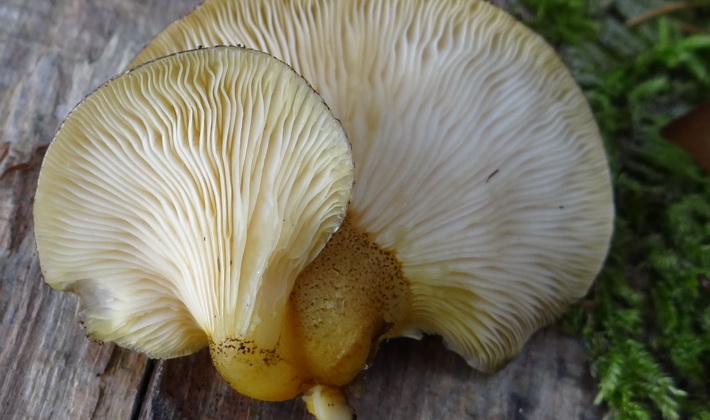
Leg is lateral, sometimes almost absent, finely scaly, ocher or yellowish-brown.
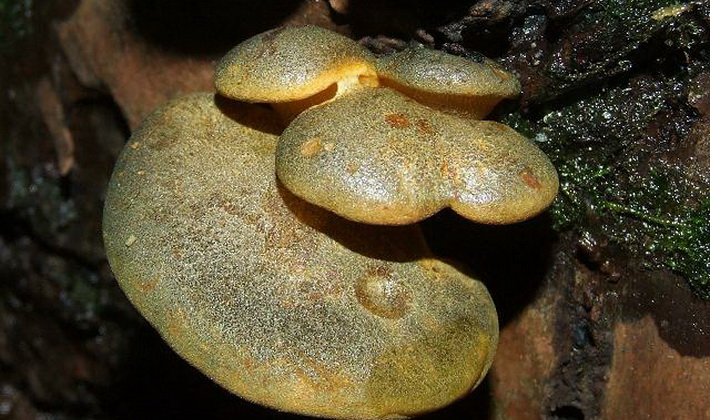
The hat is fleshy, finely pubescent, slightly mucous, shiny in wet weather.
At a young age, edible; mature mushrooms are stiff and have a thick skin. After boiling, it can be used in main dishes and pickles.
Ecology and distribution:
It grows in deciduous and mixed forests, on a mossy deciduous forest. It is able to bear fruit during thaws at temperatures from + 5 ° C.
Oyster mushroom (Pleurotus cornucopiae).

Family: Mycenae (Mycenaceae).
Season: end of May - October.
Growth: in groups.
Description:
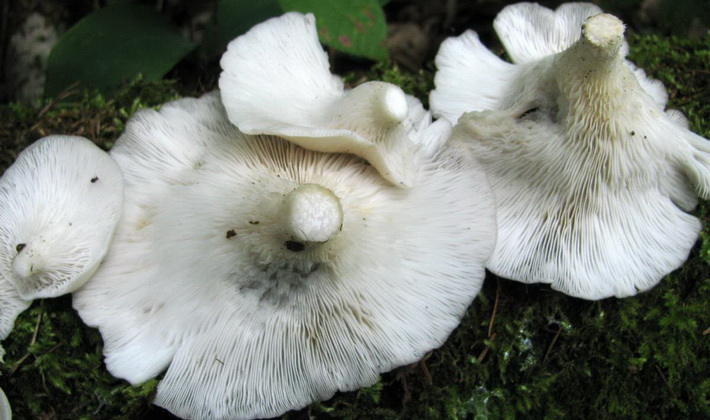
The pulp is white, fleshy, hardening with age, with a faint powdery smell.
Plates descending far along the leg, rare, narrow, whitish.
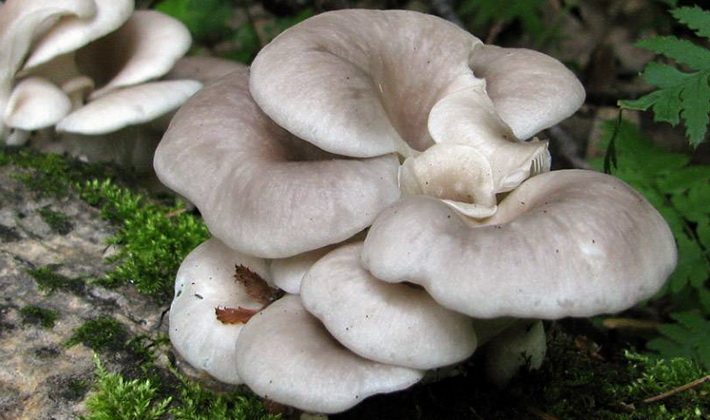
The cap is depressed, funnel-shaped, carob-shaped, fawn or pale yellow-ocher. The edge of the cap is often wavy.
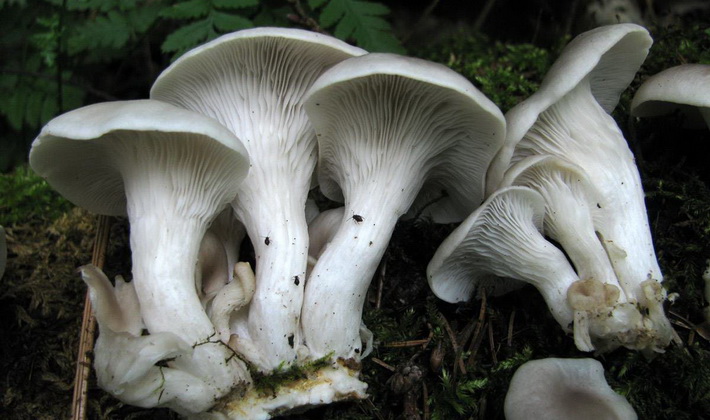
Leg eccentric, rarely central or lateral, narrowed to the base, solid, light or fawn.
The fungus is edible at a young age; requires preliminary boiling.
Ecology and distribution:
It grows on stumps and dead woods of deciduous species (elm, aspen, birch, oak, maple, mountain ash).
Fat pig (Tapinella atrotomentosus).
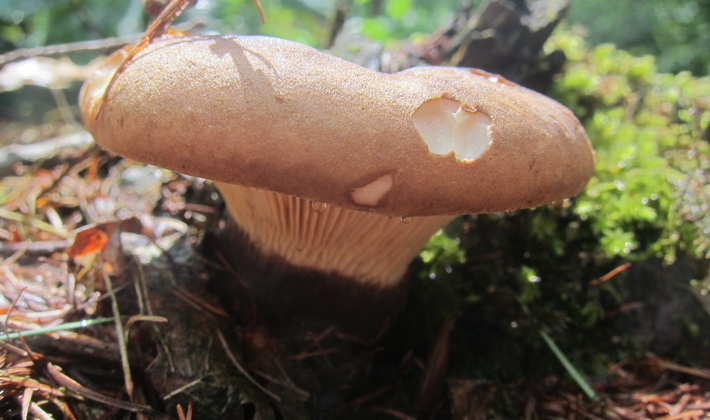
Family: Tapinella (Tapinellaceae).
Season: July - October.
Growth: single-handedly.
Description:
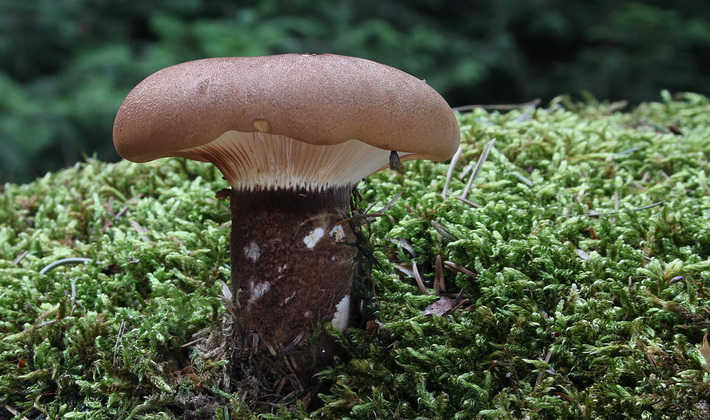
The hat is convex, thick, with a suede surface, brown.
Descending plates, frequent, ocher-yellow.
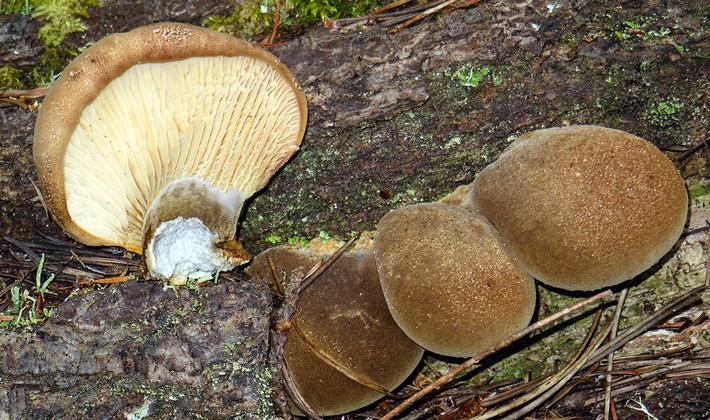
The flesh is melting, darkening at the cut, caustic.
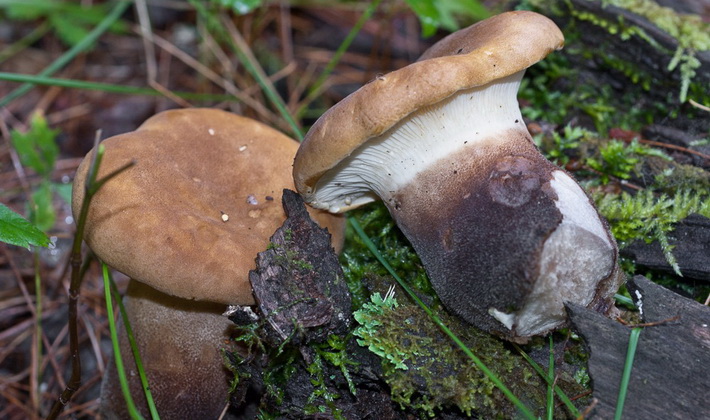
Leg eccentric, curved, covered with dark nap over the entire length.
The information about edibility is contradictory.
Ecology and distribution:
It grows in coniferous and mixed forests on stumps or fallen trunks of conifers, mainly firs and pines. In Russia, distributed in the European part, in the Caucasus and in Western Siberia.
